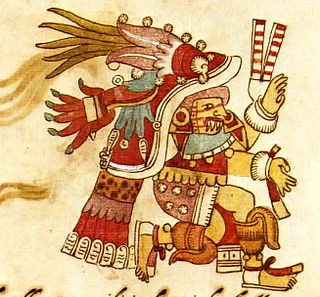
Philippine mythology is rooted in the many indigenous Philippine folk religions. Philippine mythology exhibits influence from Hindu, Muslim, Buddhist, and Christian traditions.
Laon, is a pre-colonial female supreme creator deity in the animist anito beliefs of the Visayan peoples in the Philippines. She is associated with creation, agriculture, the sky, and divine justice. Her domain is usually identified with the volcano Kanlaon of the island of Negros, the highest peak in the Visayas Islands. She is present in the pre-colonial beliefs of the Aklanon, Capiznon, Cebuano, Hiligaynon, Karay-a, Suludnon, and Waray people, among others. Her name is variously rendered as Lahon, Lalaon, Malaon, Raom, and Laonsina among the different Visayan groups.

Kōjin, also known as Sambō-Kōjin or Sanbō-Kōjin, is the Japanese kami (god) of fire, the hearth and the kitchen. He is sometimes called Kamado-gami, literally the god of the stove. He represents violent forces that are turned toward the betterment of humankind.

A weather god or goddess, also frequently known as a storm god or goddess, is a deity in mythology associated with weather phenomena such as thunder, snow, lightning, rain, wind, storms, tornadoes, and hurricanes. Should they only be in charge of one feature of a storm, they will be called after that attribute, such as a rain god or a lightning/thunder god. This singular attribute might then be emphasized more than the generic, all-encompassing term "storm god", though with thunder/lightning gods, the two terms seem interchangeable. They feature commonly in polytheistic religions, especially in Proto-Indo-European ones.
Time and fate deities are personifications of time, often in the sense of human lifetime and human fate, in polytheistic religions. In monotheism, Time can still be personified, like Father Time.

A liminal deity is a god or goddess in mythology who presides over thresholds, gates, or doorways; "a crosser of boundaries". These gods are believed to oversee a state of transition of some kind; such as, the old to the new, the unconscious to the conscious state, the familiar to the unknown.

A volcano deity is a deification of a volcano. Volcano deities are often associated with fire, and are often represented as fire deities as well. The following is a list of volcano deities:





